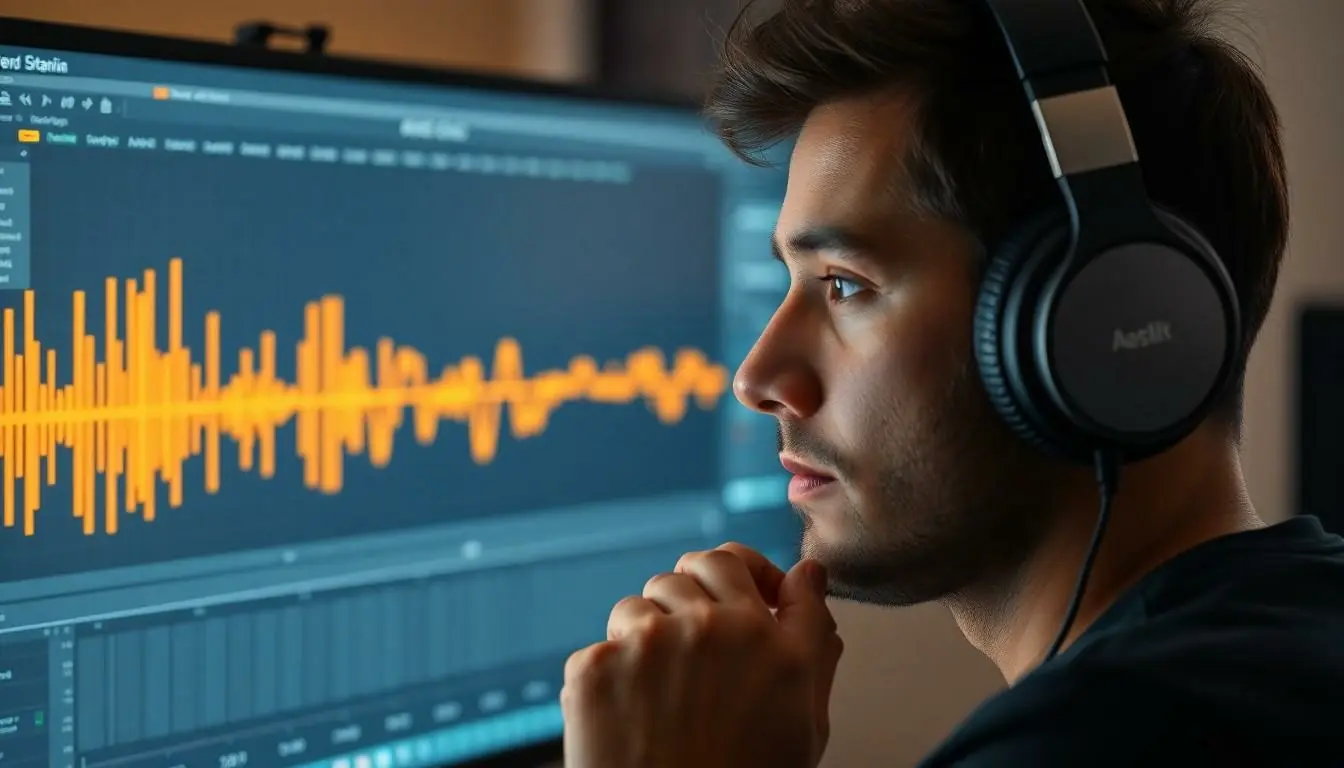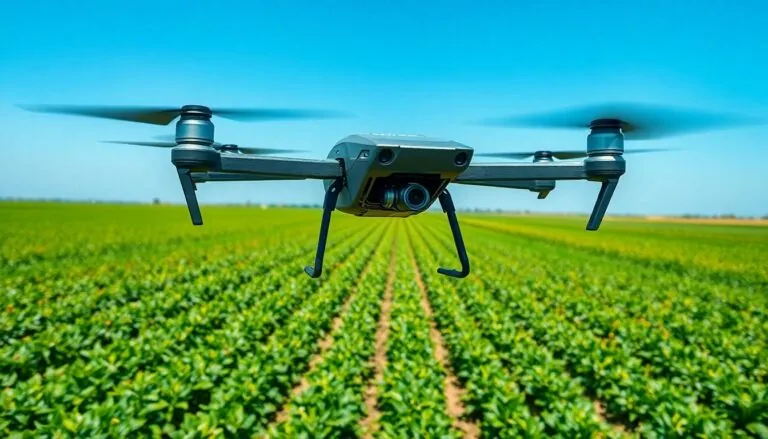Table of Contents
ToggleIn a world where reality and illusion dance a little too closely, deepfake technology has taken center stage. Imagine watching a video of your favorite celebrity saying something utterly absurd—it’s hilarious until you realize it could be fake. With deepfakes becoming more sophisticated, spotting the signs of audio or clips created using this tech is crucial.
Understanding Deepfake Technology
Deepfake technology utilizes artificial intelligence to manipulate audio and video, creating convincing fake content. This process includes using neural networks, particularly Generative Adversarial Networks (GANs), which generate realistic media by learning from existing datasets. The technique demands extensive training data to enhance accuracy, making recognizable distortions less frequent.
Auditory deepfakes focus on synthesizing human voices, often imitating specific individuals. They analyze vocal nuances, pitch, and tone, allowing for seamless replication across various contexts. Visual counterparts combine facial feature mapping and lip-syncing, often resulting in stunningly lifelike visuals.
Experts highlight several signs that an audio or clip may use deepfake technology. Inconsistencies in audio quality, like unnatural pauses or abrupt tonal shifts, often signal manipulation. Additionally, visual anomalies such as mismatched lip movements and expression dissonance frequently betray the artificial nature of the media.
User skepticism grows as deepfake technology advances, making it necessary for viewers to remain vigilant. Recognizing common indicators of deepfakes can help in distinguishing between genuine and manipulated content. Increasing familiarity with these markers empowers users to critically analyze the authenticity of media in today’s digital landscape.
Understanding the underlying mechanisms of deepfake technology fosters awareness. Equipped with this knowledge, individuals can navigate an increasingly complex information environment. Recognizing deepfake media remains crucial as the line between reality and illusion continues to blur.
Common Signs of Deepfake Audio

Recognizing deepfake audio can prove critical, especially as technology evolves. Several indicators reveal whether audio content has been manipulated.
Inconsistent Voice Quality
Inconsistent voice quality often signals deepfake audio. Fluctuations in tone, volume, and pitch may occur throughout the recording. Listeners might notice abrupt changes that disrupt the natural flow of speech. For instance, a sentence might shift from a soft whisper to an unnatural shout. Variations can stem from inadequate voice synthesis. Distortion or lack of clarity in certain words also offers clues. Professionals can detect these inconsistencies during careful analysis, enhancing understanding of audio manipulation.
Unnatural Speech Patterns
Unnatural speech patterns frequently indicate the presence of deepfake technology. Individuals may find that pauses and inflections don’t match typical human conversation. Rhythm, pacing, and emotion often lack the expected authenticity. For example, synthetic voices might rush through certain phrases or linger uncharacteristically on others. Repetition of specific phrases can feel robotic, deviating from normal speech habits. Deepfake audio commonly misses subtle cues that people instinctively know. Awareness of these patterns increases overall media literacy.
Identifying Deepfake Video Clips
Deepfake videos often contain subtle clues that reveal their manipulated nature. Recognizing these signs can help viewers differentiate between authentic and synthetic content.
Mismatched Lip Movements
Mismatched lip movements serve as a primary indicator of deepfake manipulation. Observations often reveal that the movement of lips does not synchronize with the spoken words. Timing discrepancies in the articulation of phrases typically signal deepfake technology’s interference. Look for unnatural pauses or elongation of syllables, which can indicate an artificial audio overlay. Noticing any irregularities in the way the subject’s mouth moves compared to the audio enhances the likelihood of identifying a deepfake video.
Unnatural Facial Expressions
Unnatural facial expressions frequently accompany deepfake videos. Facial animations that appear overly rigid or lack fluidity suggest alterations made by artificial intelligence algorithms. These expressions may not accurately reflect the emotions conveyed by the dialogue, showcasing an inconsistency in realism. Observers might see strange changes in eye movements or a general lack of realistic facial dynamics, contributing to the perception of inauthenticity. Detecting these discrepancies can significantly help viewers spot deepfake content amid genuine videos.
Tools and Techniques for Detection
Various tools and techniques help in detecting deepfake content. Software applications analyze audio and visual elements, identifying inconsistencies typical of deepfakes. Signal processing algorithms assess audio quality, focusing on elements like frequency patterns, which can reveal alterations.
Machine learning models excel at recognizing specific traits of deepfake content. They examine metadata for anomalies, such as unusual file formats or missing information that standard recordings typically contain. Additionally, they assess waveform irregularities in audio tracks, spotting unnatural transitions that deviate from standard human speech.
Human reviewers play an essential role as well. Reviewers often rely on their experience to spot discrepancies in visual and auditory elements that algorithms might overlook. The implementation of collaborative platforms facilitates collective detection efforts, allowing users to flag suspicious content for further analysis.
Third-party verification services enhance authenticity checks. These services cross-reference content against databases containing known authentic media, streamlining the identification process. Integrating blockchain technology into content sharing establishes immutability, providing a reliable history of the media’s origin.
Educational resources raise awareness about deepfake detection. Training programs equip individuals with the skills to identify deepfake signatures and improve overall media literacy. Online communities share tips and experiences, educating users about emerging detection strategies.
Employing multiple techniques enhances the likelihood of accurate detection. By combining technological solutions with human oversight, users can navigate the complexities of audio and video fidelity more effectively. Awareness of available tools and techniques empowers individuals to critically assess media authenticity in the face of advancing deepfake technology.
Ethical Considerations in Deepfake Usage
Deepfake technology raises significant ethical concerns. Users may exploit it for malicious purposes, such as slander or defamation. Respecting individual privacy becomes crucial, as unauthorized usage can lead to damage in reputations and emotional distress. Legal frameworks lag behind technological advancements, leaving victims without adequate recourse.
Consequences often extend beyond personal harm. Misinformation can spread rapidly, influencing public opinion on social, political, and cultural issues. This misinformation undermines trust in media, fostering skepticism and confusion. People frequently find it challenging to distinguish between genuine content and deepfakes, making ethical implications broader.
Educating users about deepfake features proves essential. Many individuals lack awareness of the signs that indicate manipulated audio and visual content. Promoting digital literacy can empower audiences to critically analyze media. Encouraging responsible use of deepfake technology presents an opportunity to harness its creative potential while minimizing risks.
Collaborative efforts among technologists, lawmakers, and educators emerge as a necessary response. Developing guidelines for ethical deepfake usage can mitigate potential abuses. Establishing platforms for reporting harmful deepfakes fosters accountability among creators. Strengthening regulations on deepfake technology creates a balance between innovation and ethical responsibility.
Engagement in public discussions about deepfake implications becomes essential for societal awareness. Individuals are urged to share their insights and concerns, contributing to the conversation on how to navigate deepfake technology responsibly. Society’s ability to adapt to these evolving challenges hinges on collective action and ethical considerations surrounding deepfake usage.
Recognizing the signs of deepfake technology is crucial in today’s digital landscape. As audio and video manipulation becomes more sophisticated, users must remain vigilant. Inconsistent voice quality and unnatural speech patterns can be red flags for audio deepfakes. Similarly, mismatched lip movements and unnatural facial expressions often indicate video manipulation.
By familiarizing themselves with these indicators, individuals can better discern authentic content from synthetic media. This awareness not only enhances personal media literacy but also contributes to a more informed society. As technology evolves, staying educated about deepfake characteristics will empower individuals to navigate the complexities of media authenticity effectively.




